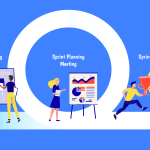Mastering the Art of Product Security: An In-Depth Look into Product Security Maturity Scan
A Product Security Maturity Scan (PSMS) is a process that organizations use to assess the security of their products and identify areas for improvement. This can include both software and hardware products. The goal of a PSMS is to evaluate the current security posture of a product and identify any vulnerabilities or weaknesses that could be exploited by attackers. This process usually involves a combination of manual and automated testing to identify potential security issues.
During the PSMS, the product is evaluated against a set of established security standards and best practices. These evaluations typically include both operational and technical parameters. We will get into the details of operational parameters and technical parameters later. Based on the results of the PSMS, an organisation can identify areas where their product security needs to be improved and create a plan to address those areas. This can include implementing new security controls, updating existing controls, and providing additional training for employees
So, a PSMS is similar to a security audit, but it is typically focused on the security of a specific product, rather than an organisation as a whole. In layman term, PSMS is like a security checkup for your product, it helps identify if there are any weaknesses in the product that can be exploited by attackers and provide a report on how to improve the security of the product and make it more secure.
- Who performs the PSMS?
- What are the steps involved in a PSMS?
- What are the parameters on which PSMS is performed?
- Let’s dive deeper into the parameters that are evaluated during a Product Security Maturity Scan (PSMS)
- SCORECARD : How to measure these parameters for PSMS Report?
- OWASP Software Assurance Maturity Model (PSMM) scorecard
- Choice of scorecard for PSMS
- Different tools/framework to score the operational and technical parameters during PSMS
Who performs the PSMS?
The PSMS process is typically performed by a team of security experts. This team may be internal to the organization, or it may be an external consulting firm. The team should have a diverse set of skills, including expertise in security design and architecture, secure development practices, security testing and validation, security operations, and incident management.
What are the steps involved in a PSMS?
The PSMS process typically includes the following steps:
- Identification of the product or service to be evaluated: This step involves identifying the specific product or service that will be evaluated. It is important to understand the scope of the evaluation, as well as the goals and objectives of the scan.
- Selection of the appropriate security standards and best practices: This step involves identifying the security standards and best practices that will be used for the assessment. Standards such as ISO 27001 or NIST SP 800-53 can be used as a basis for the assessment.
- Assessment of the product or service against the selected standards and best practices: This step involves performing the actual assessment of the product or service. The team will assess the product or service against the selected standards and best practices, and identify any security gaps or vulnerabilities.
- Identification of security gaps and vulnerabilities: This step involves identifying the specific security gaps and vulnerabilities that were identified during the assessment. The team will document these findings and provide recommendations for how they can be addressed.
- Recommendations for improving the product or service’s security: This step involves providing recommendations for how the security of the product or service can be improved. These recommendations may include changes to the product or service’s design, development practices, testing, and operations.
What are the parameters on which PSMS is performed?
- Security design and architecture: This parameter assesses the design and architecture of the product or service to ensure that it is secure.
- Secure development practices: This parameter assesses the development practices used to create the product or service, to ensure that they are secure.
- Security testing and validation: This parameter assesses the testing and validation practices used to ensure that the product or service is secure.
- Security operations and incident management: This parameter assesses the operations and incident management practices used to ensure that the product or service is secure.
- Compliance and regulatory requirements: This parameter assesses the product or service’s compliance with relevant regulatory requirements.
Let’s dive deeper into the parameters that are evaluated during a Product Security Maturity Scan (PSMS)
These parameters can be divided into two main categories: operational parameters and technical parameters.
Operational Parameters
Evaluating the organization compliance , monitoring, detection and response capabilities
- Program: This parameter assesses the organization’s overall security program and its alignment with business objectives. It includes evaluating the organization’s governance structure, risk management processes, and overall security posture.
- Resources: This parameter assesses the organization’s allocation of resources for security activities. It includes evaluating the organization’s staffing, budget, and technology investments for security.
- SDL (Software Development Life cycle): This parameter assesses the organization’s software development life cycle (SDLC) processes. It includes evaluating the organization’s use of secure coding practices, testing processes, and documentation.
- PSIRT (Product Security Incident Response Team): This parameter assesses the organization’s incident response capabilities. It includes evaluating the organization’s incident response plan, incident management procedures, and incident reporting processes.
- Policy: This parameter assesses the organization’s security policies and procedures. It includes evaluating the organization’s security governance, risk management, and compliance policies.
- Process: This parameter assesses the organization’s security processes. It includes evaluating the organization’s incident response, vulnerability management, and change management processes.
- Training: This parameter assesses the organization’s security training and awareness programs. It includes evaluating the organization’s employee training, education, and awareness programs.
- Reporting and Tracking tools: This parameter assesses the organization’s reporting and tracking tools used to monitor, detect and respond to security incidents.
Technical Parameters
Evaluating the organisations use of automated security testing tools , secure coding practices , secure libraries and frameworks , services secure communication protocols and secure data storage practices
- Security Requirements Plan / Security Definition of Done: This parameter assesses the organization’s security requirements and how they are incorporated into the product or service. It includes evaluating the organization’s use of threat modeling and risk management to identify security requirements.
- Architecture and Design Reviews: This parameter assesses the organization’s design and architecture of the product or service to ensure that it is secure. This includes evaluating the product or service’s security controls, threat modeling, and risk management.
- Threat Modeling: This parameter assesses the organization’s use of threat modeling to identify and mitigate security risks. It includes evaluating the organization’s use of threat modeling tools and methodologies.
- Security Testing: This parameter assesses the organization’s security testing practices. It includes evaluating the organization’s use of penetration testing, vulnerability scanning, and threat modeling.
- Static Analysis: This parameter assesses the organisations use of static analysis tools to identify security vulnerabilities in the code.
- Dynamic Analysis: This parameter assesses the organisations use of dynamic analysis tools to identify security vulnerabilities in the code during runtime.
- Fuzz Testing: This parameter assesses the organization’s use of fuzz testing to identify security vulnerabilities by providing unexpected or malformed inputs to the product or service.
- Vulnerability Scans / Penetration Testing: This parameter assesses the organization’s use of vulnerability scans and penetration testing to identify security vulnerabilities.
- Manual Code Reviews: This is a process where human reviewers manually examine the source code of a product to identify any potential security vulnerabilities. This can include checking for things like hardcoded passwords, SQL injection vulnerabilities, and buffer overflow vulnerabilities.
- Secure Coding Standards: This refers to a set of guidelines and best practices that developers should follow when writing code to ensure that the resulting product is as secure as possible. These standards can include things like input validation, error handling, and secure data storage.
- Open Source / 3rd Party COTS Libraries: Organizations often use open source libraries and commercial off-the-shelf (COTS) libraries to speed up the development process. However, these libraries can also introduce security risks, so it is important to assess the security of these libraries and ensure that they are being used securely.
- Privacy: This parameter is focused on ensuring that the product respects the privacy of its users. This can include evaluating how user data is collected, stored, and shared, as well as ensuring that the product does not collect or share more data than is necessary.
SCORECARD : How to measure these parameters for PSMS Report?
The scorecard used for PSMS is designed to provide a holistic view of the product or service’s security. It assigns scores to each parameter based on the level of maturity of the product or service’s security. The scorecard should be easy to understand and provide clear information on the product or service’s security status.
There are several different scorecards that organizations can use to provide clear information on the product security stance:
- Common Industry Framework (CIF): The CIF is a framework developed by the National Cyber Security Centre (NCSC) in the UK. It uses a maturity model to evaluate the security of a product, with five levels of maturity (Initial, Managed, Defined, Quantitatively Managed, Optimizing).
- OWASP Software Assurance Maturity Model (SAMM): The OWASP SAMM is a framework developed by the Open Web Application Security Project (OWASP). It uses a maturity model to evaluate the security of a software development process, with three levels of maturity (Level 1: Initial, Level 2: Managed, Level 3: Optimizing).
- ISO/IEC 15408: The ISO/IEC 15408 is an international standard for IT security evaluation. It defines a set of security functional requirements that a product must meet, and it uses a set of evaluation criteria to assess the security of a product.
- NIST Cybersecurity Framework (CSF): The NIST CSF is a framework developed by the National Institute of Standards and Technology (NIST) in the US. It defines a set of security controls that organizations should implement to protect their systems and data.
- CERT Resilience Management Model (CERT-RMM): The CERT-RMM is a framework developed by the Software Engineering Institute (SEI) at Carnegie Mellon University. It uses a maturity model to evaluate the security of an organization, with five levels of maturity (Initial, Managed, Defined, Quantitatively Managed, Optimizing).
- PCI DSS (Payment Card Industry Data Security Standard) : It’s a widely used standard for securing credit card transactions and data protection.
OWASP Software Assurance Maturity Model (PSMM) scorecard
The OWASP Software Assurance Maturity Model (PSMM) scorecard is a framework developed by the Open Web Application Security Project (OWASP) that is used to evaluate the security of a software development process. The PSMM scorecard is based on a maturity model, with three levels of maturity:
- Level 1: Initial – At this level, the organization has minimal or no formal software security initiatives in place. Security is an afterthought, and vulnerabilities are typically identified and addressed through testing or incident response.
- Level 2: Managed – At this level, the organization has established a formal software security program, with clear policies and procedures in place. Security risks are identified and managed through the software development lifecycle, and security testing is conducted.
- Level 3: Optimizing – At this level, the organization has a mature software security program, with a strong focus on continuous improvement. The organization uses metrics to measure the effectiveness of its security controls, and it continuously monitors and adapts its security program to changing threats and regulations.
The PSMM scorecard is made up of 12 activities, each of which is grouped into one of three categories: Governance, Assurance and Operations. These activities include:
- Governance: Management of security risks, security governance, and compliance management.
- Assurance: Security requirements management, threat modeling, security testing, and security in the development lifecycle.
- Operations: Security in production, incident management, and security metrics.
Each activity is evaluated on a scale of 1 to 3, with 1 indicating that the activity is not being performed, 2 indicating that the activity is being performed in a basic way, and 3 indicating that the activity is being performed in a mature and effective way. The overall maturity level is determined by the average score across all activities.
Choice of scorecard for PSMS
The choice of scorecard for a Product Security Maturity Scan (PSMS) will depend on the specific requirements of your organization and the product being evaluated. Here are a few factors to consider when choosing a scorecard:
- Industry Standards and Regulations: Some industries have specific security standards and regulations that must be met, such as the Payment Card Industry Data Security Standard (PCI DSS) for companies that process credit card payments.
- Maturity Level: Different scorecards may have different maturity levels and may be more appropriate for organizations at different stages of their security journey. For example, the OWASP Software Assurance Maturity Model (SAMM) is geared towards software development organizations, while the CERT Resilience Management Model (CERT-RMM) is more focused on incident response.
- Product Type: Different scorecards may be more appropriate for different types of products. For example, the Common Industry Framework (CIF) is geared towards evaluating the security of IT systems and networks, while the ISO/IEC 15408 focuses on evaluating the security of IT products and systems.
- Resources Available: Some scorecards may require more resources to implement than others. For example, the ISO/IEC 15408 standard requires an extensive evaluation process that may require specialized personnel and resources.
Different tools/framework to score the operational and technical parameters during PSMS
There are several tools that organizations commonly use to score the operational and technical parameters during a Product Security Maturity Scan (PSMS). Some of these tools include:
Operational Parameters:
- NIST Cybersecurity Framework (CSF): The NIST CSF is a framework that provides a common language and structure for organizations to manage cybersecurity risks. It includes a set of standards, guidelines, and best practices for managing cybersecurity risks.
- ISO/IEC 27001: This is an international standard that provides a framework for managing and securing sensitive information. It includes a set of best practices for information security management, including risk management, incident management, and compliance.
- OWASP (Open Web Application Security Project) Top 10: This is a set of the top 10 most critical web application security risks identified by OWASP. It includes best practices for mitigating these risks, and it can be used as a benchmark for evaluating the security of web applications.
Technical Parameters:
- SANS Top 20 Critical Security Controls: This is a set of 20 critical security controls identified by SANS Institute. It includes best practices for mitigating the most common cybersecurity risks, and it can be used as a benchmark for evaluating the security of IT systems.
- OWASP (Open Web Application Security Project) Top 10: This is a set of the top 10 most critical web application security risks identified by OWASP. It includes best practices for mitigating these risks, and it can be used as a benchmark for evaluating the security of web applications.
- OWASP Mobile Top 10: This is a set of the top 10 most critical mobile application security risks identified by OWASP. It includes best practices for mitigating these risks, and it can be used as a benchmark for evaluating the security of mobile applications.
- CVSS (Common Vulnerability Scoring System): This is a standard for scoring the severity of security vulnerabilities. It provides a common method for comparing the risk of different vulnerabilities and helps organizations prioritize their remediation efforts.
Add Comment
You must be logged in to post a comment.








